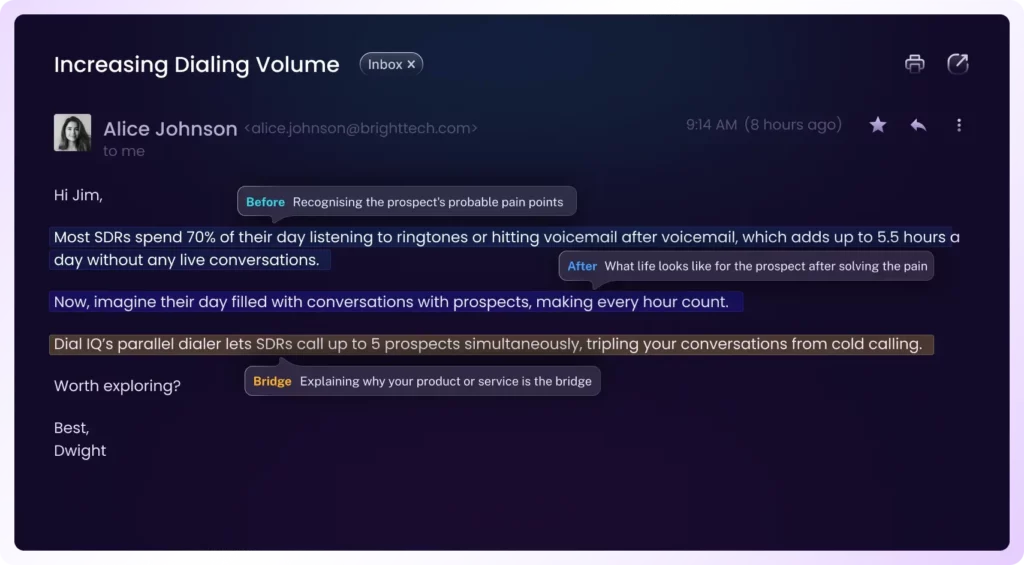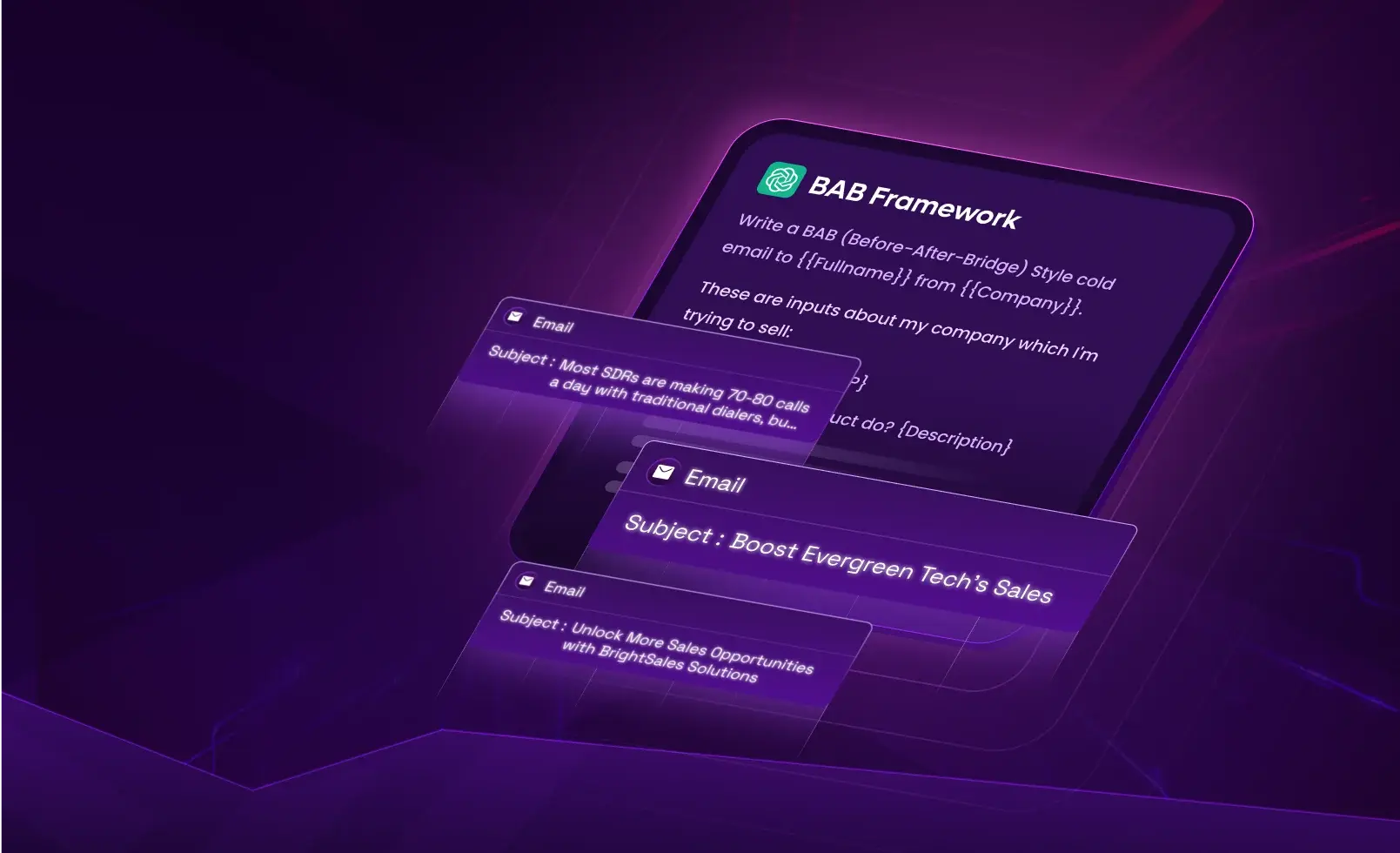Here's the truth about cold emails: Most sales reps focus on features and benefits without creating a compelling vision of transformation. But here's what really moves prospects to action: seeing the gap between where they are and where they could be.
Enter the BAB framework—Before-After-Bridge, developed by Gene Schwartz to turn pain points into possibilities.
Think of BAB as a three-act transformation story that shows prospects not just what's possible, but how to get there.
But here's the catch: Creating this contrast without being overly dramatic or unrealistic isn't easy.
Most sales reps struggle to paint a credible picture of transformation, either underselling the possibility or overselling the outcome.
This is where AI steps in.
Tools like ChatGPT can help sales reps craft messages that perfectly balance current reality with future potential.
In this blog, we'll explore the BAB framework, provide a ready-to-use ChatGPT prompt for creating cold emails, and share an example email generated using the framework.
What Makes BAB Work?
The power of BAB lies in its contrast-driven approach. Rather than leading with solutions, it first creates a clear picture of the gap between current struggles and potential success.
1. Before: The Current Reality
The first component focuses on acknowledging the prospect's present situation. This isn't about dramatizing pain points—it's about showing you understand their daily challenges and industry context.
2. After: The Possible Future
The after phase paints a picture of what's possible. This section helps prospects envision a better future state, using realistic and measurable outcomes to maintain credibility.
3. Bridge: The Path Forward
Having established the contrast between present and future, your solution becomes the logical bridge. This section focuses on how your offering specifically enables the transformation.

💡 ChatGPT Prompt: BAB FRAMEWORK
Write a BAB Style cold email to {{Fullname}} from {{Company}}.These are inputs about my company which I'm trying to sell:Ideal Customer: {ICP}What does my product do? {Description}The value we provide for the user: {Value Proposition}What pain points do we solve? {Painpoints}Competitor Advantage: {Competitor Advantage}How we have helped people: {Case Study}This is the input about the prospect: {Prospect_Research}Write the subject in the following format:Keep it simple, stating the main topic of the email. Avoid being overly creative or fancy. Limit it to 3-4 words max.Write the email in the following format:Before: Acknowledge the current situation and challenges, framed in terms of industry standards.After: Paint a picture of the ideal outcome, using "What if" or "Imagine" to pose possibilities.Bridge: Present your solution as the path to transformation.End with a CTA - Either "Worth a chat?" or "Worth exploring?"Guidelines:Keep the email under 80 words.Use a friendly, direct tone.Make sure to bring forth all the mentioned elements of formatting.Avoid vague terms like "streamline," "optimize," "maximize," etc.Be as specific as possible without making assumptions about the prospect.Sample Output:

Conclusion
The BAB framework and prompt provided are your blueprints for writing transformation-focused cold emails that drive action.
But the real challenge is scaling this approach for hundreds of prospects. Even with AI, executing this effectively at scale is a struggle.
That's why we built SDRx—an AI outbound agent that handles everything from in-depth prospect research to perfectly timed follow-ups, creating qualified pipeline without the manual grind.
By analyzing prospect behavior and leveraging 25 copywriting frameworks, SDRx generates highly personalized emails at scale, ensuring every outreach is relevant and impactful.
Want to use AI to create personalized, human-like emails for every prospect?
Book a demo of SDRx today.


